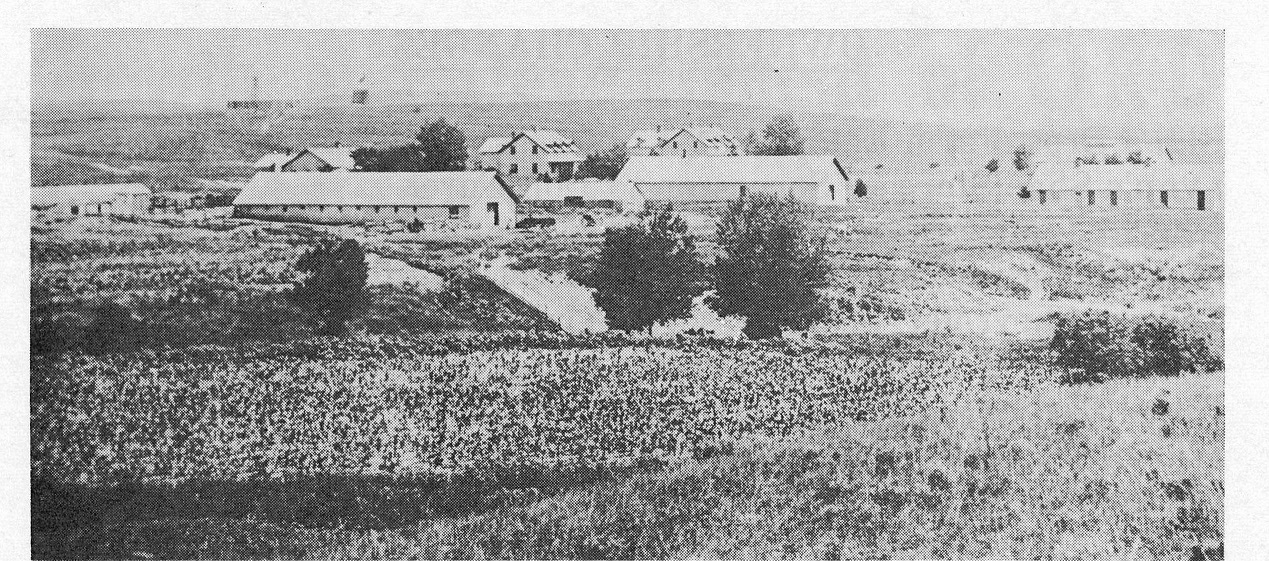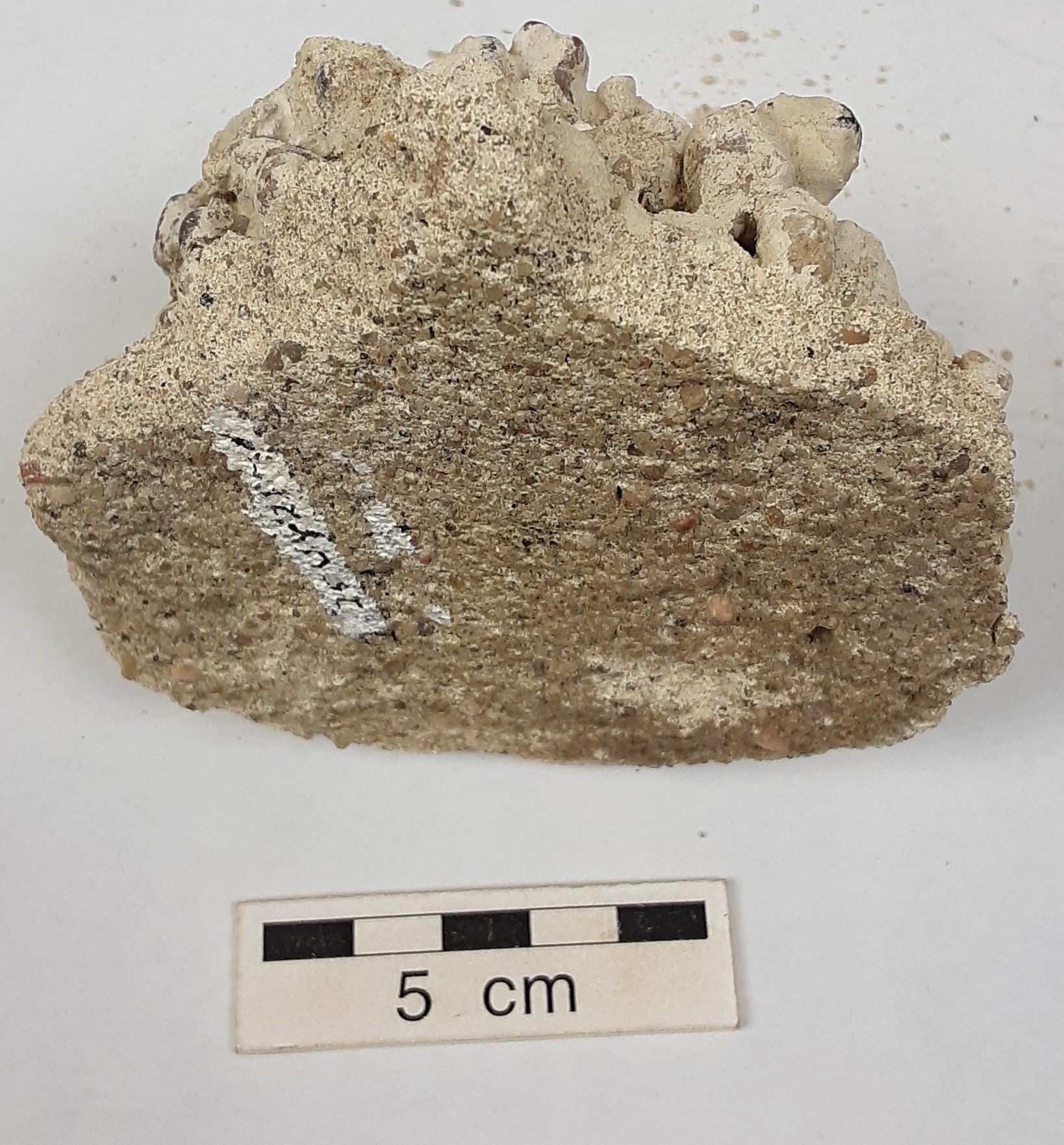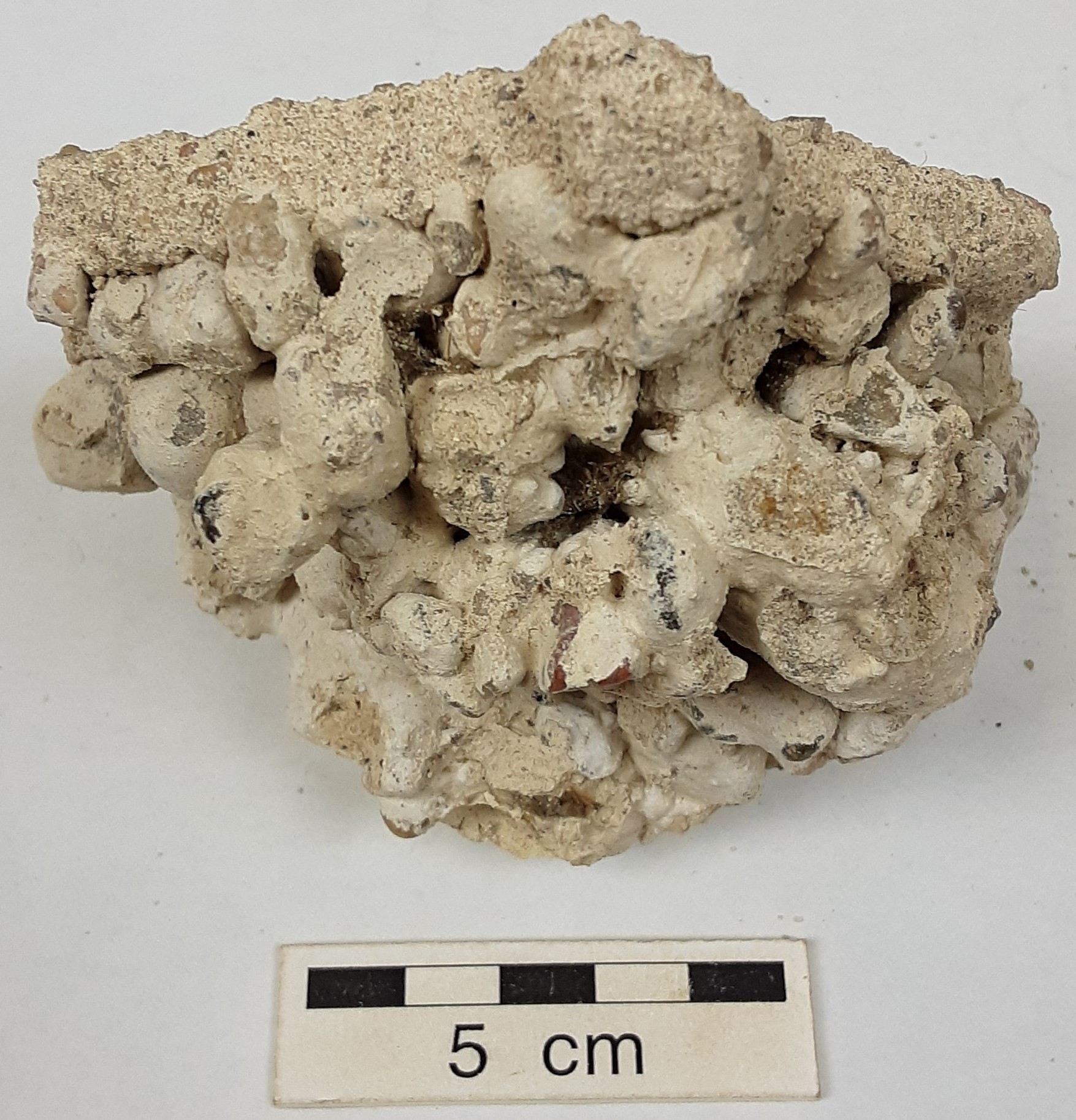Fort Hartsuff State Historical Park is located in the North Loup Valley near the town of Elyria. The fort was a frontier military post from 1874 to 1881, and was built to protect local settlers and the Pawnee Tribe from the perceived threat of hostile Native American incursions. However, the soldiers at the fort saw only one minor skirmish during its seven year existence.
The presence of the fort did reassure the local settlers. The fort’s most important role was as an employer for construction projects and other odd jobs, and a market for the local farmers to sell their crops. The presence of the fort greatly helped the settlers to weather the grasshopper plague of 1874 (Wagner 2008:154-167). The fort was also an important social gathering place for the local population. Here is a photo of the fort at roughly the time of its abandonment.

Photo from 25VY21 Site File
The 1,280 acre military reservation and nine original buildings were acquired by the Nebraska Game and Parks Commission in 1961, but the park has not seen any systematic archeological investigation. The striking difference between this fort and Fort Atkinson and Fort Robinson is that many of the original buildings at Fort Hartsuff are still standing. Below are air photos from 1951 and 2017. Much of the archeology in the State Historical Parks was undertaken to allow for accurate reconstructions, but this was unnecessary at Fort Hartsuff.

1951 Photo from 25VY21 Site File

2017 Image from Google Earth
The fort owes its longevity to a construction method unique to Fort Hartsuff among Nebraska forts. The buildings at the fort were made of a lime/concrete mixture known as grout. The construction technique involved cementing larger stones together with smaller pebbles filling any spaces and then facing the entire structure with the lime/concrete mixture to achieve smooth walls inside and out. Shortly after the state acquired the fort, archeologists from the Nebraska State Historical Society, now History Nebraska, did collect a few grout pieces that had broken off of the fort jail.

Exterior Face of a Grout Fragment

Interior Face of a Grout Fragment
References
- Alexandra M Wagner, “Grasshoppered: America’s Response to the 1874 Rocky Mountain Locust Invasion,” Nebraska History 89 (2008): 154-167.
- Unpublished material from the 25VY21 archeological site file at History Nebraska.



